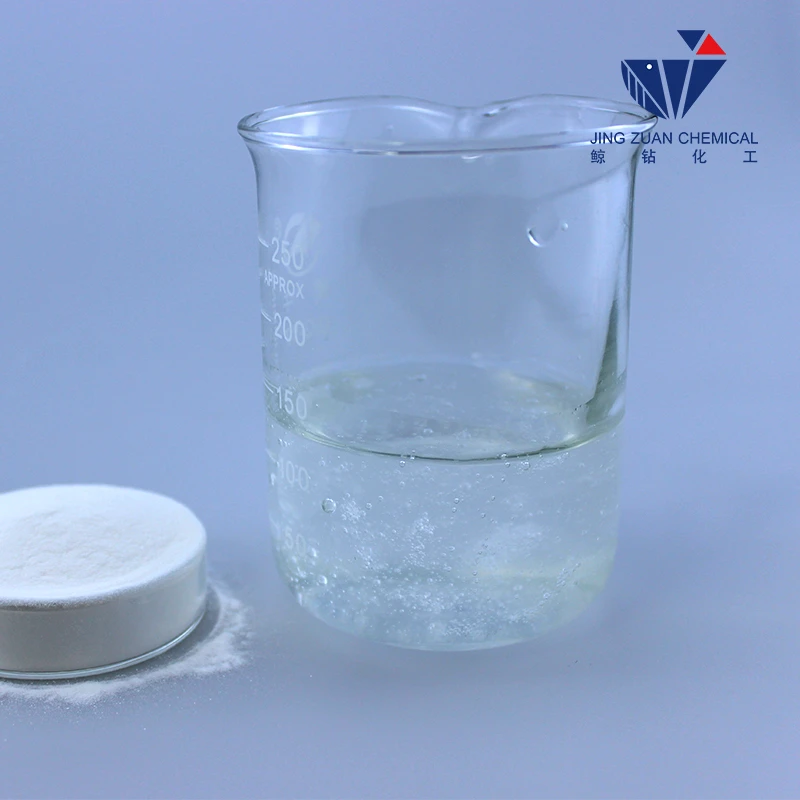
Nov . 12, 2024 03:43 Back to list
hydroxyethyl cellulose sds
Hydroxyethyl Cellulose (HEC) Safety Data Sheet Overview
Hydroxyethyl cellulose (HEC) is a non-ionic, water-soluble polymer derived from cellulose, mainly used in various industries, including cosmetics, pharmaceuticals, and food. Its unique properties, such as thickening, emulsifying, and film-forming capabilities, make it a versatile ingredient in many formulations. Understanding its characteristics and safety information is crucial for manufacturers and users alike. This article provides an overview of the safety data sheet (SDS) related to hydroxyethyl cellulose, covering its physical and chemical properties, hazards, handling, and storage.
Composition and Chemical Properties
Hydroxyethyl cellulose is synthesized by the etherification of cellulose with ethylene oxide. The degree of substitution indicates the number of hydroxyl groups replaced by hydroxyethyl groups, influencing HEC's solubility and viscosity. HEC is characterized by its appearance as a white to off-white powder or granules and has a relatively low molecular weight. It dissolves readily in cold or hot water, forming a viscous solution.
Health Hazards
HEC is generally considered safe for use. According to the SDS, it is not classified as hazardous under normal conditions of use. This means that it poses minimal risk to human health when handled appropriately. However, it is essential to note that exposure to large amounts of HEC dust may irritate the eyes and respiratory tract. Skin contact can also lead to irritation in sensitive individuals. Thus, although it is deemed safe, standard safety precautions should be observed.
First Aid Measures
In case of exposure, the SDS outlines specific first aid measures - Inhalation If inhaled, move the person to an area with fresh air. If symptoms persist, seek medical attention. - Skin Contact Wash the affected area with soap and water. If irritation develops, consult a healthcare professional. - Eye Contact Rinse eyes carefully with water for several minutes. If irritation persists, seek medical advice. - Ingestion If ingested, do not induce vomiting. Rinse mouth and seek medical assistance if symptoms occur.
Handling and Storage
hydroxyethyl cellulose sds

Proper handling and storage of HEC are vital to maintaining its quality and safety. It should be stored in a cool, dry place, away from direct sunlight and incompatible substances. Containers should be tightly closed when not in use to avoid moisture absorption, which can affect the product’s properties.
When handling HEC, it is advisable to wear protective gloves and goggles, particularly in industrial settings where dust formation is likely. Implementing good ventilation in the work area will also help mitigate potential inhalation risks.
Environmental Impact
HEC is biodegradable, making it an environmentally friendly option compared to other thickening agents. In very low concentrations, it poses minimal risk to aquatic life. Nevertheless, it is critical to avoid large quantities of HEC entering water systems, as with any polymer, it could have unintended ecological effects.
Regulatory Information
In many countries, HEC is approved for use in food products, cosmetics, and pharmaceuticals. It complies with safety regulations set forth by agencies such as the FDA and EFSA. However, users should remain aware of specific local regulations that may apply, especially in industrial applications.
Conclusion
Hydroxyethyl cellulose is a valuable additive widely used across various sectors for its thickening and stabilizing properties. While it generally poses minimal health risks, it's essential to follow safe handling guidelines and adhere to the information presented in its safety data sheet. By doing so, users can ensure safe and effective use of this versatile compound while minimizing environmental impact.
-
Versatile Hpmc Uses in Different Industries
NewsJun.19,2025
-
Redispersible Powder's Role in Enhancing Durability of Construction Products
NewsJun.19,2025
-
Hydroxyethyl Cellulose Applications Driving Green Industrial Processes
NewsJun.19,2025
-
Exploring Different Redispersible Polymer Powder
NewsJun.19,2025
-
Choosing the Right Mortar Bonding Agent
NewsJun.19,2025
-
Applications and Significance of China Hpmc in Modern Industries
NewsJun.19,2025







